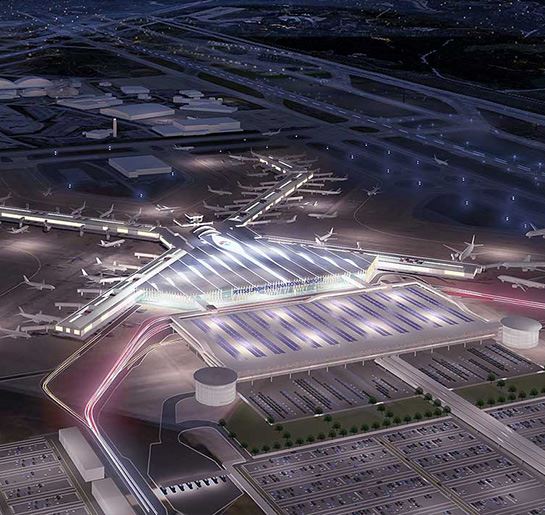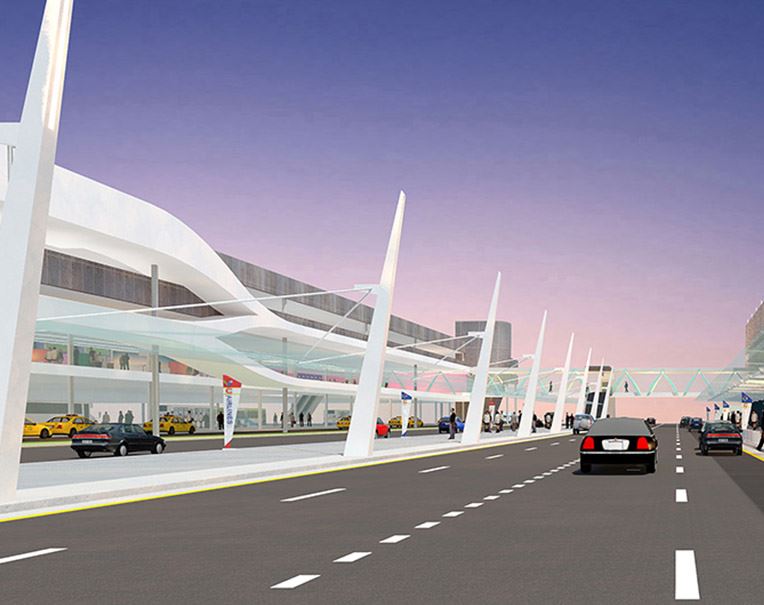The Allegheny County Airport Authority (ACAA), which manages Pittsburgh International Airport (PIT) and Allegheny County Airport (AGC), has a vision to transform Pittsburgh’s airports to reflect and serve the community, inspire the industry, and advance the region’s role as a world leader. Prioritizing communities and the surrounding environment is key to achieving this vision. In 2018, the ACAA won the Airports Council International – North America (ACI-NA) Environmental Achievement Award for outreach, education, and community involvement for its “Outside the Fence” program. Through this program, it has partnered with the Montour Run Watershed Association to address abandoned mine discharge elimination on airport property. This is one of several efforts that propel the ACAA toward its vision and demonstrate to the community that it has become a leader in sustainability and natural resource management, education, and outreach programs.

Photo Credit: Allegheny County Airport Authority Flikr
The ACAA is also pursuing the development of an on-site airport microgrid to lower energy costs and enhance the resiliency of energy service using natural gas and solar electricity. Natural gas has been produced on-site since 2016 but is not currently being used to directly fuel airport operations. The envisioned microgrid could generate and distribute a substantial proportion of the energy needed by the airport and its tenants.
Major renovations at PIT - known as the Terminal Modernization Project (TMP) - will begin next year and continue through 2023. Announced by the ACAA in September 2017, the TMP will position PIT as an industry leader in airport design, operation, and management, with updated facilities that will provide best-in-class passenger experiences while reducing long-term costs. Before any construction can begin, every “i” must be dotted, every “t” must be crossed, and every wetland must be delineated. Much work is needed to ensure that the TMP will minimize any impacts on the surrounding environment and local communities.
 The existing airport consists of Airside and Landside terminals connected by a train. Space is not laid out to efficiently accommodate current airport operations, with long moving walkways, baggage transportation between terminals, and outdated security checkpoints adding expense to the airport’s operation and time to travelers’ journeys.
The existing airport consists of Airside and Landside terminals connected by a train. Space is not laid out to efficiently accommodate current airport operations, with long moving walkways, baggage transportation between terminals, and outdated security checkpoints adding expense to the airport’s operation and time to travelers’ journeys.
The Terminal Modernization Program consists of the following:
- Replacing the existing Landside terminal with a new three-level, 632,000-square-foot Main Terminal attached to the existing Airside Terminal that includes:
-
- Ground Level: Airline and Airport support, baggage operations, explosive baggage detection systems, Federal Inspection Services and building utilities;
- Concourse level: Airline and passenger functions related to check-in, security screening checkpoint, domestic baggage claim, and concessions; and
- Mezzanine level: ACAA administrative offices and conference space.
- Refurbishment of the existing Airside Terminal concourses
- A six-story garage connected to the Main Terminal addition by two pedestrian bridges. The garage structure will house 4,500 public parking spaces as well as rental car counters, pick-up, and return, and the ground transportation center (GTC)
- Separate rental car quick turn-around (QTA) facility
- Cell phone lot and a paved commercial vehicle staging lot
- New roadway system to support the new terminal complex
A Draft Environmental Assessment (Draft EA) was prepared by ACAA to evaluate the potential environmental impacts of the TMP pursuant to the requirements of the National Environmental Policy Act (NEPA). The Draft EA included an analysis of reasonable alternatives, potential environmental impacts, and mitigation measures, as deemed appropriate. This document was available for public review through April 2018 and approved by the Federal Aviation Administration (FAA) in May 2018. The Draft EA concluded that no significant environmental impacts will be caused by the TMP. Alternatives considered enhancing the existing terminals, replacing the garage and constructing the International Arrivals Facility only, and the selected TMP. The selected TMP was determined not to result in any significant environmental impacts and to best achieve the ACAA’s customer service and financial objectives.

Today’s world is shaped by shifting economic, social, and environmental forces – and at its heart lies the need to achieve sustainable development. Every stage of the construction process has a measurable environmental impact; from the manufacturing of building materials and the transportation of those materials to the building site, to the construction process itself and the final waste removal and disposal processes that follow the completion of the project. Environmental professionals, contractors, and design firms will be working in a collaborative effort with the ACAA to reduce those impacts while designing new infrastructure, energy production and distribution systems, and buildings.
 We hope you’ll join us at our next event, A Conversation with Christina Cassotis, CEO Allegheny County Airport Authority, to hear about her leadership of the ACAA and the exciting developments at Pittsburgh’s airports. The event will be held on September 25, 2018 at 8:00 am at the DoubleTree Green Tree (500 Mansfield Ave., Pittsburgh, PA 15205). Please visit the SWEP Three Rivers website for event details and to register by September 12.
We hope you’ll join us at our next event, A Conversation with Christina Cassotis, CEO Allegheny County Airport Authority, to hear about her leadership of the ACAA and the exciting developments at Pittsburgh’s airports. The event will be held on September 25, 2018 at 8:00 am at the DoubleTree Green Tree (500 Mansfield Ave., Pittsburgh, PA 15205). Please visit the SWEP Three Rivers website for event details and to register by September 12.
Article written by Cindy Zuch, with contributions by Shaena Berlin Ulissi and Amanda McNally.
Sources:
Terminal Modernization Program (including concept photos)
Pittsburgh International Airport News Releases
Microgrid Knowledge
Pittsburgh International Airport
